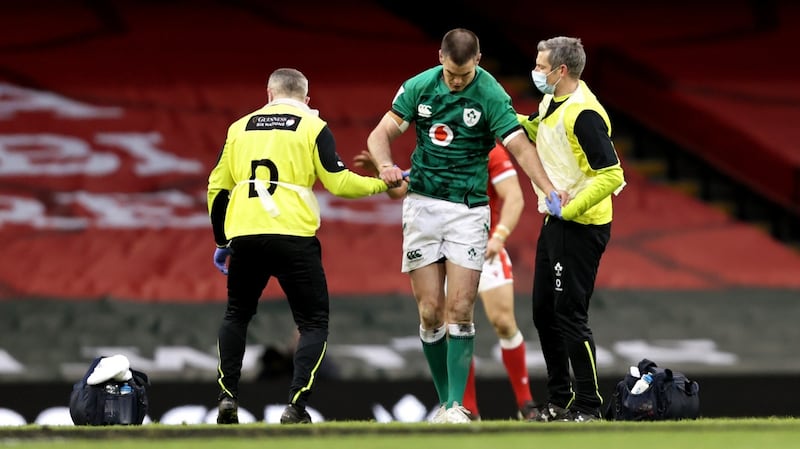During this fallow week in the Guinness Six Nations, players, coaches and fans will be reflecting on the performance of their team. It is the same for the medical teams. Over the last fortnight we've had lots of debate in the media around concussion and I want to share my perspective.
Concussion is a brain injury, and rugby takes it extremely seriously. That’s why we value expert opinion and hear voices from across the globe. We welcome constructive debate and respect all opinions.
The science of concussion and long-term cognitive health is extremely complex and there are varying views. Scientific knowledge and societal understanding continue to evolve, and rugby evolves with it, always guided by medical and scientific consensus to inform our concussion education, prevention and management strategies.
That commitment is firmly in action during this tournament. We've already had instances of foul play which involve head contact and players have been sanctioned. This is part of our strategy to change player and coach behaviour via tough sanctions framed by the high tackle sanction framework, and the match officials are playing their part.
We’ve also seen several players removed from the field for a head injury assessment (HIA). This is vital for identifying concussions where the diagnosis is not apparent. Using a clear process mandated by World Rugby, medical teams use several tools to determine a suspected concussion, which prevents a symptomatic player from returning. The accuracy of the HIA is approximately 92 per cent, double the success rate of previous tools, and as accurate as an MRI scan for shoulder injuries.
Following a concussion, and once symptom free, players must complete World Rugby’s six-stage graduated return to play protocol before being cleared to participate in full contact training or play. Contrary to some reporting, there is no set timeframe for its completion. For example, presently, two thirds of concussed players do not play the following week, and many do not return within three weeks.
To progress, a player must pass each stage without the presence of any symptoms or signs of a concussion. They must also complete a neurocognitive assessment and equal or improve upon their baseline score. This process is overseen by team doctors who are leaders in their field and act only in the interest of the player’s health.

Community participation is the lifeblood for all forms of the sport outside of the elite level, and the return-to-play process may only commence once the player has completed a set physical rest period – seven days for adults and 14 days for children and adolescents – only if the player is symptom free.
Going back to the Six Nations, perhaps the most high-profile case so far has been that of Johnny Sexton. As I'm sure most of Ireland will agree, there have already been too many people commenting on his case, and it's easy to be an armchair medical expert, but what I saw was an effective process in action.
He was permanently removed. Then the graduated return to play protocol supported his recovery, with Johnny ultimately being unavailable for Sunday’s game. These decisions were taken by the expert Irish medical team who understand his individual needs, following a process agreed by World Rugby and its stakeholders.
Individualised care
In every area of modern medicine, individualised care is used. This philosophy is adopted in sports and every player is treated as an individual. Objective treatment decisions are made based on their symptoms, past medical history, risk profile and response to each stage of the return to play protocol. No player should return to play unless they are 100 per cent ready, no matter how long that may take.
These constantly-evolving protocols have made rugby a leader in the management of concussion risk in sport. But that’s not good enough. I want to leave this sport in an even stronger position than it is now.
To do that, we must continue to embrace technology, incorporate the latest knowledge, work with players’ representatives, and commission, fund and collaborate on research projects to benefit players at all levels. Only last week we launched our 2021 application process for research funding submissions, and we have invested almost €1 million in this area since 2015.
I've been chief medical officer of World Rugby since January, 2020. Before that I worked with the British and Irish Lions, Ireland and Munster. First and foremost though, I am a doctor and a father.
These two roles come with great responsibility and underpin everything I do at World Rugby. I care deeply about our players and my job is to use the latest advances in science and medicine to make the game as safe as possible, so that my children and yours can experience the benefits rugby brings for generations to come.
Across the rugby community, both elite and amateur, there are hundreds of medical professionals who share this goal. We work together to improve the game we love under intense scrutiny. They are part of a great team working to protect and improve player welfare. This is our mission and priority.
Dr Éanna Falvey is World Rugby’s chief medical officer














